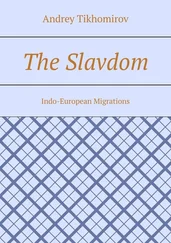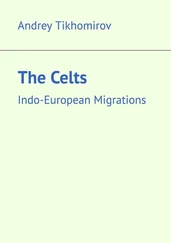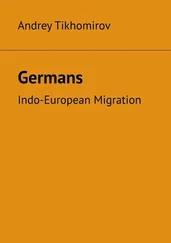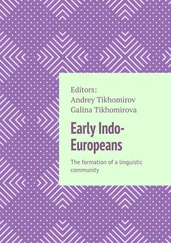In fact, more recent narrower definitions of lexicalization strongly emphasize the fact that lexicalization must also be understood as a sequential process, thus excluding items such as acronyms, conversions, and metatalk from the array of lexicalized items, due to their abrupt entry into the lexicon. This definition that regards gradualness as a crucial feature decisively complicated the whole picture (cf. Lehmann 1989; Wischer 2000; Brinton & Traugott 2005). Certainly, though, gradualness of development is not the only feature shared between lexicalization and grammaticalization. According to Lehmann (e.g. 1989) and Giacalone Ramat (1998: 121), for example, both processes entail a reductive component, understood as loss of autonomy and univerbation.
This theoretical chaos may be sorted out to some extent by highlighting the fact that the semantic developments undergone by grammaticalized and lexicalized items are in fact opposite. On the one hand, grammaticalization implies generalization, and consequent host-class expansion (i.e. grammaticalized items are promiscuous, and usually show high pattern and token productivity). On the other hand, lexicalization produces opacity (or fossilization, non-compositionality, idiosyncrasy), which results in host-class reduction (i.e. decrease in pattern productivity and possibly in token productivity) (cf. Brinton & Traugott 2005: 96–110; Haas 2007: 34). Thus, for example, the Old Irish perfective marker ro- and empty preverb no- are grammaticalized, in that they fairly systematically occur in certain morphosyntactic contexts (cf. Chapter 7). By contrast, there is no general consensus as to whether the development of Slavic preverbs into “bounder perfectives” (in Bybee, Perkins & Pagliuca’s 1994 terms) can be regarded as an actual grammaticalization: first, there is not a single marker of perfectivity; second, specific preverbs allegedly perfectivize verbs belonging to specific semantic classes (cf. Chapter 6).
2.3. Describing the meanings and the functions of preverbs
2.3.1. Semantic Roles
In this work, the spatial and non-spatial meanings of Vedic, Homeric Greek, Old Church Slavic, and Old Irish preverbs are described in terms of Semantic Roles (henceforth SRs), that is, roles played by the participants in an event (Kittilä, Västi & Ylikoski 2011: 7). Only when SRs labels are regarded as being too generic, more specific definitions will also be provided.
According to Haspelmath (1997) and Luraghi (2003), SRs are distinguished by their encoding strategies: when a SR is expressed in a specific way that it is not shared with related SRs, it is considered to be independent. Such choice is motivated by the fact that “it would be very difficult to base such a list [of SRs] on semantic criteria alone, because then there would be no way of constraining the possible proliferation of functions” (Haspelmath 1997: 10–11). SRs are also assumed to be organized in prototypical categories (cf. Luraghi 2003). Prototypicality assumes groups of entities to be representative for the categories in question; the “prototype” is the most representative entity for a certain category (Lakoff 1987).1 For example, the features of the prototypical Agent are humanity, causation, intentionality, control, and saliency (Givón 1984: 107; Fillmore 1968: 24–25; Jackendoff 1972: 32; Andrews 1985: 68; Luraghi 2003: 30). However, it is far from clear that an Agent consistently displays all such features, as the following examples illustrate:
1 Luke ate an apple.
2 Luke accidentally broke a vase.
Both in (5) and in (6), the Agent is canonically encoded by the subject ( Luke ), as usually happens in languages in which the nominative case (in the broad sense, cf. Haspelmath 2006) is highly grammaticalized, including Indo-European languages. However, the events described (5) and (6) are different: in (5), Luke intentionally causes a change of state to the apple . In (6), Luke similarly brings about a change of state to the vase ; however, the action of breaking is not intentional, as the occurrence of the adverb accidentally shows. Therefore, in (6), Luke is a non-prototypical Agent, in that it lacks the features of intentionality and control.
In ancient Indo-European languages, both spatial and non-spatial relations are expressed by means of morphological cases, preverbs, and adpositions (cf. Luraghi & Narrog 2014: 1–22). Importantly, the relative semantic contributions brought about by cases, preverbs and adpositions in carrying out this function can undergo variation along the diachrony of a certain language (cf. the relevant sections in Chapters 4–7). Notably, such historical developments are consistent with the organization of meanings in prototypical categories proposed by Cognitive Grammar. In addition, Cognitive Grammar offers the insight that metaphor and metonymy are cognitive tools by which human beings can conceptualize non-basic domains in terms of more basic ones such as space (cf. Section 2.1).
In this work, I limit my scope to providing a non-exhaustive catalogue of SR’s and to associating each of them with a prototypical definition. Owing to constraints of time and space, it is not possible to discuss all Vedic, Homeric Greek, Old Chruch Slavic, and Old Irish SRs and their coding strategies here (see Chapters 4–7 and references therein).
Agent : a prototypical Agent is an entity that performs and causes an action. Furthermore, Agent prototypically exercises a force over another entity (i.e. Patient) and is characterized by intentionality and control (cf. above in this Section; Section 2.3.2.3).
Patient: prototypically, the SR of the entity that undergoes a change of state or location, performed by an Agent. It is usually coded by the accusative case in nominative-accusative languages. Its typical feature is a high degree of affectedness (cf. Section 2.3.2.3).
Recipient: this SR is played by an animate entity that receives another entity. It is usually taken by the third argument of some trivalent predicates, typically of verbs of ‘giving’ (transaction verbs).
Addressee: the SR played by an entity, most frequently a human being, which is the goal of a communication event.
Experiencer : the SR of the (animate) entity that experiences a physical or a psychological process triggered by another entity or event ( Stimulus ). The Experiencer is often coded as a subject (cf. Luke in (7)), but occasionally it can also be associated with direct objects, as me in (8).
1 Luke always gets my jokes.
2 Luke annoys me to no end.
Possessor : the SR of the (animate) entity that possesses another entity. In Indo-European languages, possession is expressed by different encoding strategies, including the genitive case, the external possessor construction (Luraghi forthc. a), whether it is in the double accusative case (Luraghi & Zanchi forthc. on Ancient Greek) or in the dative case.2
Beneficiary : this SR is taken by the (human) entity in favor of whom an action is carried out. A sub-type of Beneficiary is Malefactive, which is the human entity against which an action is performed. Another sub-type of Beneficiary is Substitute, which relies on the idea of replacement: if x acts in y ’s behalf, x is conceived as acting in y ’s place.
Cause: the SR of the referent that originates an event. Such referent can be a natural force, an emotion, an abstract notion, another type of inanimate entity, a human being, a state of affairs or an event. Cause expressions are often grounded on Source expressions according to the metaphor CAUSES ARE ORIGINS (Lakoff & Johnson 1980), on Time expressions (an event that precedes another event can be understood as the cause of the subsequent event), and on Area expressions (cf. Area below).
Читать дальше












